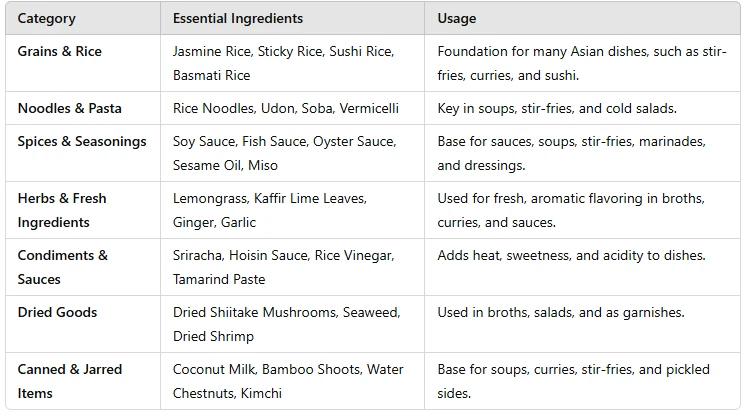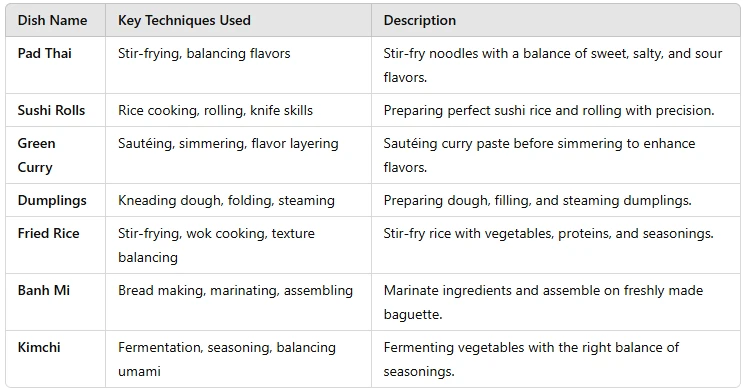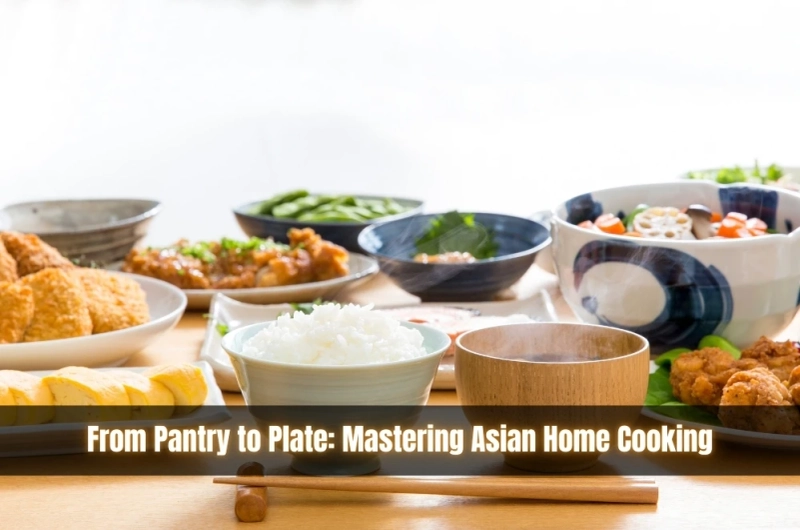Has this ever happened to you: You stand in front of your fridge, staring blankly inside, unsure of what you can make? Maybe you’ve craved that yummy pad thai from your local takeaway or daydreamed about some steamed dumplings but thought the prospect of making it at home was too daunting. You're not alone. Many Australians love the bright flavours of Asian food but are too frightened to try and make it themselves. The excitement of using a new ingredient and method is like climbing a cooking mountain. But with some know-how and a well-stocked pantry, making your favourite Asian dishes at home is not only possible but also profoundly satisfying. This is where you start, whether you’re a confident cook or have never turned the oven on. We also explain how to find reliable asian grocery suppliers to ensure you have access to the freshest quality ingredients.
Stocking your essential Asian pantry
The basis for a successful culinary journey is a solid foundation. Let's begin with the basics.

Key ingredients for versatile Asian dishes
- Rice varieties: From the aromatic jasmine rice perfect for Thai curries to the sticky sushi rice for Japanese rolls, each variety offers a unique texture and flavour.
- Noodles: Udon, ramen, and rice noodles can give you different textures and are the base of many Asian dishes.
- Key sauces: Soy sauce, oyster sauce, fish sauce and sriracha are the flavour heavyweights, adding depth and complexity.
- Spices and aromatics: Ginger, garlic, chilli and lemongrass are the aromatic bases for countless recipes.
These ingredients are the backbone of Asian cooking, offering endless possibilities. To create authentic dishes, it's essential to source ingredients in the Asian markets, ensuring the best quality and variety. For example, layering jasmine rice with garlic, ginger, and soy sauce can form the base of a stir-fry, fried rice, or curry.
Where to find authentic ingredients in Australia
There are increasingly many Asian grocery stores in Australia, both physical and online. Try your local region for specialty shops, or consider reputable online stores with a wide range of authentic items.
Mastering basic Asian cooking techniques
With your pantry stocked, let’s get into the essential techniques.
Stir-frying, The heart of so many Asian dishes
- The perfect stir-fry needs high heat, quick cooking and constant movement. A wok works best, but a large frying pan will do.
- Get your wok or pan very hot; layer a little oil in the bottom, then add the ingredients quickly, starting with the ones that take the longest to get tender.
- It takes practice, but work skills are worth it. You are heating food and keeping food in action.
Steaming: An express health and flavour alternative
- Steaming preserves the natural flavours and nutrients of vegetables, dumplings, and fish, keeping them pure and intact.
- Set a metal or bamboo steamer basket over a pot of boiling water, keeping the water from touching the food.
Simmering and braising: Developing deep and complex broths
- Delicate dashi is the foundation of Japanese cooking, which is done by simmering kelp (kombu) and bonito flakes in water.
- Seared meats in soy-based sauces make for tender, delicious dishes.
Popular dishes to cook at home
Let’s put those techniques to work in some familiar dishes.
What Asian dishes are most popular in Australia?

What is the most popular Asian food?
Dishes like sushi, ramen, and dim sum are wildly popular. If you're looking to taste the flavours of Asia, start with sushi, which requires sushi rice, nori sheets, and your choice of fillings. Ramen features a richly flavoured broth, noodles, and toppings like chashu pork and soft-boiled eggs. Dim sum includes small, delicious dishes like dumplings and steamed buns, either cooked or pan-fried.
Understanding traditional Asian flavours
Learning the cultural heritage of the cuisine makes cooking a richer experience.
What is the traditional Asian food?
- Old Asian cookery balances the five dominant tastes: sweet, sour, salty, bitter, and umami.
- The country and regional differences are vast, with specific specialities.
- Understanding the significance of food is part of respecting its traditions and the meaning it conveys about its seasonings and preparation techniques.
Tips for success and customisation
Best of all, it is all about the pleasure of owning Asian cooking as your own.
Adapting recipes to your taste
- Substitute ingredients or tweak spices to your taste.
- If you don’t have oyster sauce, you can substitute soy sauce with a touch of sugar.
Presentation matters
- To make the dish look pretty, you can top it with your favourite fresh herbs, sesame seeds, or a swirl of your sauce.
- Simple plating tricks can make a world of difference.
Conclusion
The vibrant world of Asian cooking awaits, ready to transform any home kitchen into a flavour factory. Stocking the proper pantry, learning the basic techniques, and getting the right pots, pans and knives — making genuine dishes may be an incredible, rewarding and utterly attainable journey. Celebrate the balance of sweet, sour, salty, bitter and umami, and take joy in preparing meals with the depth of culture. As you explore new recipes, remember the importance of food safety practices to ensure a healthy and enjoyable cooking experience. We’d love to hear what readers are cooking, what successes and flops you’re having, and what your favourite recipes are, so please post them in the comments below, and let’s create a little community of home cooks. It's highly recommended that those interested in improving their culinary experience find providers offering suitable ingredients and professional advice.


